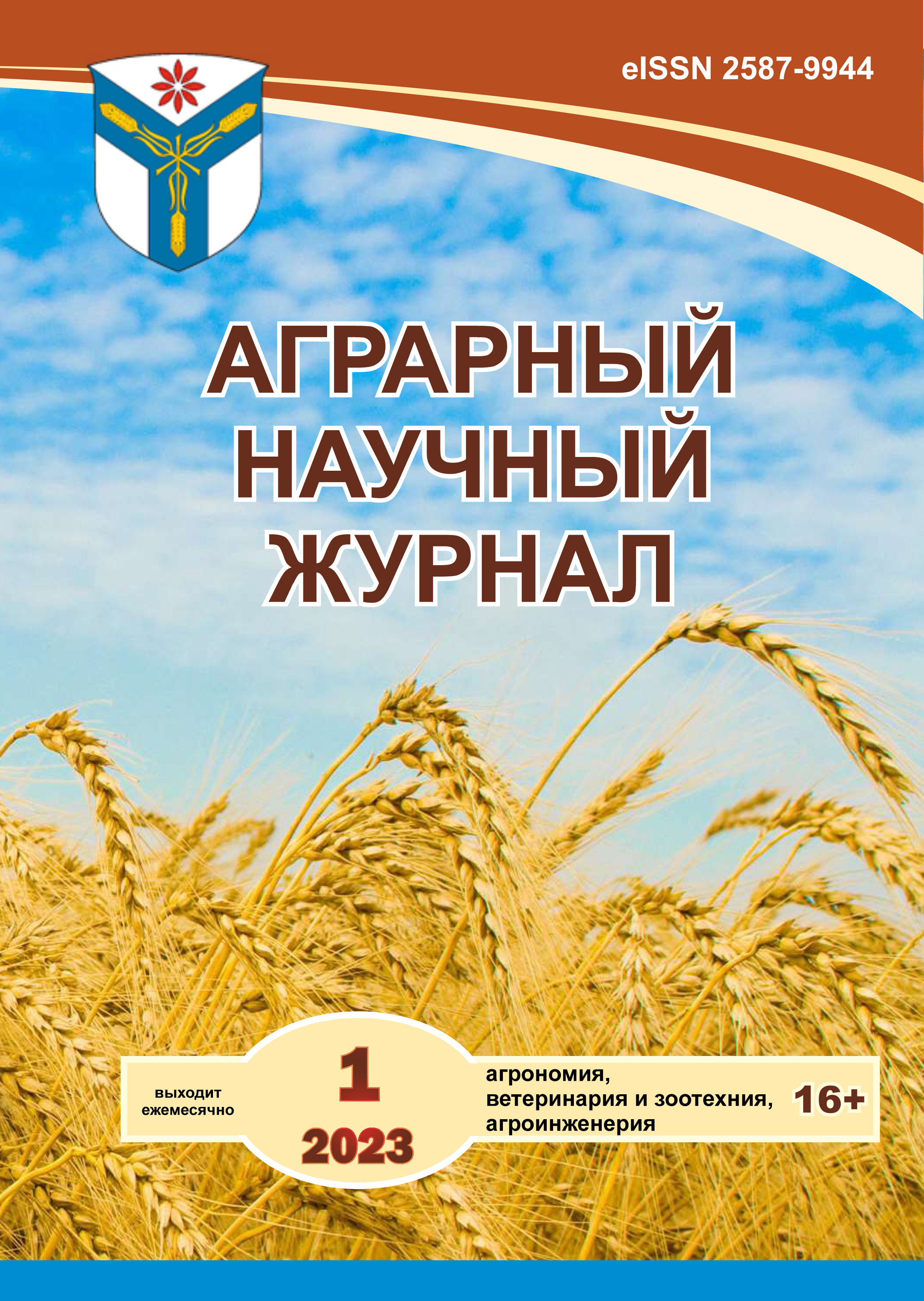Technology of cultivation of annual Alexandrian clover (Trifolium alexandrinum)
DOI:
https://doi.org/10.28983/asj.y2023i1pp71-76Keywords:
clover, annual forage crops, Trifolium alexandrinum, cultivation technology, initial materialAbstract
The article discusses the results of research on a new technology we developed for the cultivation of an annual crop of Alexandrian clover (Trifolium alexandrinum), which includes a method of pre-sowing treatment of seeds with different terms and methods of sowing. Recently, along with agrotechnical measures to stabilize crop production, there is a need to cultivate non-traditional crops that are useful for human nutrition and health, and not the least role in this process is played by annual legumes. The short vegetation cycle and the intensive rate of crop formation allow them to be cultivated in repeated crops in places with favorable bio-climatic potential. Annual forage grasses have a variety of uses and purposes. In the zone of sufficient moistening, these are good fallow-grown crops. Annual legumes play an important role in creating a strong fodder base: in the summer, they are the main source of green feed production, they serve for the preparation of hay, haylage, silage, concentrated feed in the form of grass flour, cutting, full-fledged briquettes and pellets; annual legumes can also be used as a concentrated feed in the form of grain. Harvesting grasses in the early phases of the growing season and with multi-crop use with the use of artificial drying makes it possible to obtain a feed that is not inferior in total caloric content to oats and barley, and in protein content is significantly superior to them. Annual grasses are very diverse in terms of their agrobiological characteristics: they are widely used as preliminary crops on indigenous improvement lands and as links in the pasture conveyor. Our research conducted over four years (2017-2020) revealed that pre-sowing treatment of seeds of Alexandrian clover double and triple mixtures of PABA, the krezatsinom and infusion of chicory (against the background of preliminary stratification) provides low-cost, environmentally friendly way of pre-sowing stimulation of seeds of Alexandrian clover with simultaneous northering, adaptation, and selection of the best species for use in a specific region. Sowing clover for seeds is advantageously carried out with a width of 50 cm row spacing and seeding rate of 6 kg/ha. The optimal sowing date is beginning of March and the first week of September.
Downloads
References
Bekuzarova S.A., Bekmurzov A.D., Datieva I.A., Lushchenko G.V., Salbieva M.G. Clover nodule bacteria as bioindicators of soils contaminated with heavy metals. IOP Conference Series: Earth and Environmental Science. conference proceedings. Krasnoyarsk Science and Technology City Hall of the Russian Union of Scientific and Engineering Associations. 2020: 62043.
Bekuzarova S. A., Shabanova I. A. Clover - bio indicator of heavy metals. News of the Gorsky State Agrarian University. 2014; 51(3): 297-301.
Gaafar H. M. A., El-Lateif A. I. A. A., El-Hady S. B. A., Effect of replacement of berseem (Trifolium alexandrinum L.) hay by berseem silage on performance of growing rabbits. ArchivaZootechnica. 2011; 14 (4): 59-69.
Hackney B., Dear B., Crocker G.. Berseem clover. New South Wales Department of Primary Industries, Primefacts, 2007; 388.
Hannaway D. B., Larson C.. Berseem Clover (Trifolium alexandrinum L.). Oregon State University, Species Selection Information System, 2004.
Kumar R., Kumar A., Patel M. Growth performance of pigs fed green berseem in basal diet of kitchen waste. K?fer, J.; Schobesberger, H., Animal hygiene and sustainable livestock production. 2011; 20113: 1201-1203
Maighany F., Ghorbanli M., Khalghan J., Najafpour M. Allelopathic potential of Trifolium resupinatum and T. alexandrium on seed germination of four weed species. Pakistan J. Biol. Sci. 2007; 10: 1141-1143.
Maurya P. R., Saraswat B.L. Effect of dietary inclusion of berseem (Trifolium alexandrinum) on the performance of broiler chicks. Allahabad Farmer. 2007; 63: 1-5.
Santis G. de, Iannucci A., Dantone D., Chiaravalle E.. Changes during growth in the nutritive value of components of berseem clover (Trifolium alexandrinum L.) under different cutting treatments in a Mediterranean region. Grass and Forage Science. 2004; 59 (4):378-388.
Smoliak S., Ditterline, R. L., Scheetz J. D., Holzworth L. K., Sims J. R., Wiesner L. E., Baldridge D. E., Tibke G. L. Berseem Clover (Trifolium alexandrinum). Montana State University, Animal & Range Sciences Extension Service, Forage extension program, Bozeman, USA, 2006.
Downloads
Published
Issue
Section
License
Copyright (c) 2023 The Agrarian Scientific Journal

This work is licensed under a Creative Commons Attribution-NonCommercial-NoDerivatives 4.0 International License.








